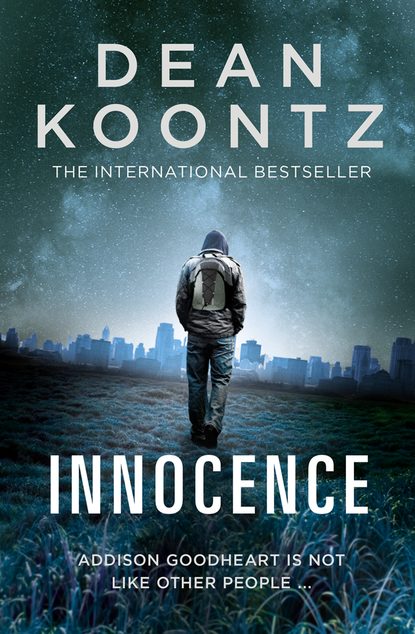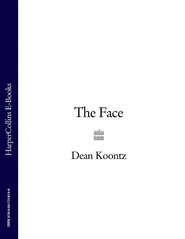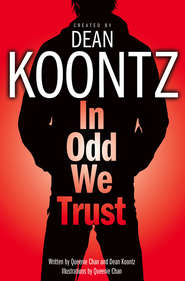По всем вопросам обращайтесь на: info@litportal.ru
(©) 2003-2024.
✖
Innocence
Автор
Год написания книги
2018
Настройки чтения
Размер шрифта
Высота строк
Поля
Ten (#ulink_273c96d1-bff9-59d6-90ba-e7338145873e)
BEYOND THE DOOR THROUGH WHICH THE GIRL had vanished, a wide hallway with a groin-vaulted ceiling served four rooms that housed specialty collections. One of those was a seven-thousand-volume collection of first editions of important detective fiction, valued at many millions and donated by a famous writer who resided in this city.
Crossing the threshold, I switched off my flashlight. I stood in the dark room, listening.
In any large building designed both for functionality and to please the eye, dead spaces exist here and there behind walls, not needed for plumbing or electrical chases. Some are as large as walk-in closets. If included in the room that they adjoin, these nooks and coves would deform the shape of that chamber. In the interest of eye-pleasing harmony, such cavities are lost behind walls.
A clever architect with a romantic streak and an appreciation for mystery will sometimes find ways to make those spaces accessible through a secret door well concealed in a paneled wall or by some other means. Often, these recovered dead spaces serve as storage, but some architects with a sense of fun and a love of things arcane will make other use of them.
If the fleet-footed girl had taken refuge here among the storied pages full of FBI agents, homicide detectives, private investigators, and amateur crime-solvers of a thousand kinds, she was as quiet as the cadavers that also filled those pages.
The original blueprints for the central library, more than a century old, were archived in the basement. My love of the building’s beauty and its books had motivated me to study the plans during numerous visits, years earlier, and I had found two dead spaces of generous proportions.
One was indeed concealed behind a secret door in a paneled wall, elsewhere in the building. It measured eleven feet wide, six deep, and it was beautifully finished with several exotic woods and exquisite millwork. I thought the architect—John Lebow of the firm Lebow and Vaughn—himself had designed and secretly performed the finish work in both hidden rooms, though not in a spirit of fun.
On the back wall, as the focal point of the first space, hung a portrait of a lovely woman with auburn hair and green eyes. She held in her hands a book and was sitting beside a table on which other volumes were piled high. On the bottom rail of the painting’s frame, a brass plaque identified her as MARY MARGARET LEBOW / BELOVED WIFE. Her date of death was given as June 15, 1904, more than a year before the construction of the library was completed.
The second secret room, ten feet wide and eight deep, was here with the detective fiction, concealed behind a wall of bookshelves that flanked a nine-foot-by-five-foot painting of the library’s main entrance as it had looked when decorated for its first Christmas in 1905. The painting seemed to be fixed in place. But a series of small steel levers, cunningly recessed in the frame’s ornate moldings, would release a latch if pressed one at a time in the correct order, thereafter allowing the painting to swing outward on a hidden piano hinge.
The second concealed chamber, likewise beautifully finished with the highest quality woodwork, featured another oil painting, this one of two children: a boy of seven, a girl of nine, each holding a book. The plaque on the frame named them—KATHERINE ANNE LEBOW / JAMES ALLEN LEBOW—and revealed that they died on the same day as their mother.
Through research, I had learned that Mary Margaret Lebow had been a librarian when the architect met and married her. Years later, on a visit to New York City, while her husband remained here to continue overseeing the building of the library, she and the children joined a few of her relatives—and more than thirteen hundred other passengers—for a day trip on the steamboat GeneralSlocum. They intended to cruise leisurely from the Lower East Side of Manhattan, along the East River to Long Island Sound. They had not gone far before a fast-moving blaze broke out aboard the vessel. Hundreds of terrified passengers leaped into the water. Few could swim. Those who did not die by fire died by drowning—more than a thousand. June 15, 1904, was the date of the greatest tragedy in the history of New York, until September 11, 2001.
Most of those who perished that day had been members of St. Mark’s Evangelical Lutheran Church, at 623 East Sixth Street, to which Mary Margaret’s relatives belonged. In their grief, other men might have judged God unspeakably cruel and might have turned away from Him forever, but apparently not John Lebow. In each of those two secret spaces, flanking each oil painting, inlaid in the woodwork were gilded crosses. These painstakingly created shrines to his wife, the librarian, and to their children were also testaments to the architect’s enduring hope.
I switched on the flashlight, shone it upon the large painting that also served as a door, and spoke loud enough to be heard by the girl if she sat in the haven behind it. “My name is Addison, although no one in the world knows it—except now you. If you’re in there with John Lebow’s lost children, I want you to know that in a different sense, I was a lost child, too, and I am still lost, although not a child anymore.”
No response was forthcoming.
“I don’t mean you any harm. If I intended to hurt you, I would press the three concealed levers in the proper order and pull you out of there right now. I want only to help you if I can. Maybe you think you don’t need help. Sometimes, I think I don’t need it, either. But we all do. We all need help.”
In the painting, evergreen boughs were wound around the columns that flanked the entrance to the library, and wreaths with huge red bows hung on each of the four tall bronze doors. Snow fell into a white-blanketed street, and the world looked more right than perhaps it had ever been since 1905.
“If you don’t want to talk with me, I’ll never bother you again. I love the library too much to give it up, so I’ll visit some nights, but I won’t look for you. Take a little time to think about it. If you do want to talk, for the next half an hour, I’ll be in the main reading room, among the stacks, where the bad man couldn’t catch you, where you ran just like a dancer dancing. I’ll be in the aisle with Charles Dickens.”
I knew her to be bold and quick and not a mouse. But a mouse behind the wainscot, smelling a cat and being smelled by it, just a thin width of cherrywood away, could not have been more quiet than this girl.
Eleven (#ulink_17e0b149-1a10-5f48-ba75-8a39b82bb4ff)
IN THE MAIN STACKS, EACH AISLE HAD ITS OWN light switch, and I clicked on only the one. The high-mounted sconces with their brushed-steel brass-trimmed shades funneled light down to glimmering pools on the caramel-marble floor.
Having removed the bulb from one sconce, I stood as near to Dickens as I dared, his books in light and I in shadows. If the girl should come, I would not by either intent or accident expose my face to her. Under my hood, reflected light might shimmer in my eyes, but she wouldn’t be able to see the color or the details, or whatever quality of them made people want to slash and burn me.
If she came and for a while we conversed like equals, and if then a sudden intuitive understanding of my nature caused her to turn and flee, I wouldn’t pursue her but would instead run away from her. In time, therefore, after her terror passed, she might realize that I not only meant her no harm but also respected—and did not resent—her antipathy.
To be my friend, maybe you must be like me, one of the hidden. It might not be possible for anyone who lives in the open to tolerate a thing like me. But always I had remained hopeful that, among the millions on this Earth, there might be a few who could summon the courage to know me for what I am and have the self-confidence to still walk part of this life with me. The girl, mysterious in her own right, was the first in a long time who seemed as if she might have that capacity.
Just when I thought she would not come, she appeared at the farther end of the aisle, moving into the light from the last sconce. Standing there in her silvery shoes and black jeans and black sweater and black leather jacket, with her feet wide apart and her hands on her hips, she looked as if she had stepped out of one of those comic books that I don’t like very much. I mean those comics in which everyone, good guys and bad guys alike, is very self-assured and tough and determined and proud of himself. They stand with their chests out and their shoulders back and their heads lifted, looking heroic and confident, and their hair is always blowing even in scenes where there is no wind, because they look better with their hair blowing. In the library, of course, there was no wind, and the girl’s hair wasn’t blowing, but it was long and black and shaggy, so that it kind of looked as if it must be blowing even when it wasn’t.
I don’t much like the superheroes and supervillains in many of those comic books because, maybe except for Batman, the way they pose dramatically all the time really does reflect how they think of themselves. Very self-righteous, whether saving the world or blowing it up. So in the thrall of power fantasies. This girl looked like she stepped out of a comic book, but somehow I could tell that the way she posed wasn’t a reflection of how she really thought of herself.
Or maybe I was deluded. The fallow soil of loneliness is fertile ground for self-deception.
After regarding me from a distance, she took her hands from her hips and approached neither warily nor boldly, but with the same effortless grace that she had shown earlier.
As she stepped into the lamplight that fell across the books by Dickens, I said, “Please stop there.” She did. We were no more than twelve feet apart, but my hoodie and the fact that I had disabled the nearest sconce spared her from the shock of my appearance.
As for her appearance, I hadn’t realized when I glimpsed her in flight that she accessorized and painted herself so grotesquely. In her pierced right nostril, she wore a silver nose ring fashioned as a snake devouring its tail. Pinned to her lower lip, bright against the black lipstick, a polished red bead looked like a drop of blood. Her flawless skin was as pale as powdered sugar, and she emphasized that pallor by applying mascara and creme-stick makeup as thick as greasepaint. With her jet-black and curiously chopped hair, the look was Goth, I suppose, but a personalized version of the standard Goth-girl style. For one thing, the creme formed carefully drawn diamonds, the upper points at midbrow, the lower points two inches down her cheeks, which reminded me of certain harlequins but also recalled to mind a most disturbing tuxedoed marionette that I had once seen in the lighted window of an antique-toy store.
At the center of those black diamonds were eyes identical to those of the marionette. Whites as white and veinless as hard-boiled eggs, anthracite-dark irises with deep-red striations so subtle that they were visible only when the angle of her head allowed the light to find them. Because my life seldom brought me face-to-face with other people, because I was familiar with the variety of human faces and the color range of eyes only from books of photography, I could not say for certain that such eyes were uncommon, but they were so disconcerting that I imagined they must be rare.
“So you want to help me,” she said.
“Yes. Whatever I can do to help you.”
“No one can help me,” she declared with no slightest indication of bitterness or despair. “Only one person could ever help me, and he’s dead. You will die, too, if you associate with me, and you’ll die cruelly.”
Twelve (#ulink_f6681b78-263d-509c-b613-d1991fda20ea)
I STOOD IN THE SHADOWS SHORT OF DICKENS, she in the lamplight, and I saw that her fingernails were painted black and that tattooed on the backs of her hands were curled blue lizards with forked red tongues.
“That wasn’t a threat, when I said you’ll have a cruel death,” she clarified. “It’s just the truth. You don’t want to be around me.”
“Who was the one person who could help you?” I asked.
“It doesn’t matter. That’s another place, another time. I can’t bring it back by talking about it. The past is dead.”
“If it were dead, it wouldn’t smell so sweet.”
“It isn’t sweet to me,” she said.
“I think it is. When you said ‘another place, another time,’ the words softened you.”
“Imagine whatever you want. There’s nothing soft here. I’m all bone and carapace and quills.”
I smiled, but of course she couldn’t see my face. Sometimes it is my smile that most terrifies them. “What’s your name?”
“You don’t need to know.”
“No, I don’t. I’d just like to know.”
The thread-thin red striations brightened in her black-black eyes. “What’s your name again, lost boy?”
“Addison, like I said.”
“Addison what?”
“My mother’s last name was Goodheart.”











